Digital PR Isn’t Link Building. It’s the Most Profitable Channel You’re Ignoring
Digital PR

28 / 08 / 20
Your brand is established in the UK, you are looking to expand, and you might have already discovered a new, lucrative market. You have the business relationships it needs, shipment sorted and everything else to start selling in that market. The only thing that is missing is your digital marketing. Your content specialist says: “We’ll hire a translator on UpWork.” Your SEO specialist adds: “We need to implement hreflang tags.” That’s it, you’re done! Not so fast… three months in and you are wondering why your marketing and digital PR aren’t working…

If only things were that easy. There is no such thing as “just translate”. Translating is a skill to learn. Being a native speaker of a language is a good start, but it doesn’t make a good translator. Whoever you get to do the job, check their background and experience and always check their translation, ideally by a proof-reader. If you have anybody in-house who speaks the language in question, ask them to take a look at the translated text to see if it reads natural to them and makes sense. If it doesn’t, you have a clear sign of a bad translation. In the best case, this will only cause for your brand not appearing in search, in the worst case you will embarrass yourself and damage your brand. The best translation fails have been collected by boredpanda.com, a comedian couldn’t entertain you better.
Apart from incorrect translations or bad quality, there is another potential issue with a translation when it comes to SEO: keywords. Language is always tied to mentality and culture and there are certain concepts that cannot be expressed in the same way in different languages. Sometimes there is no word for it, sometimes you have more than one word in the other language. You can start with a translation of the keywords in question and use those as a starting point for your keyword research in that market.
Let’s take an example we are all familiar with: coffee. In the UK, a “Café Latte” is a common drink to order. You enter a coffee shop in Germany, and you order a “Latte Macchiato”. It seems to be a close match and you get a coffee with milk. You enter another coffee shop and you order a “Milchkaffee”. It is slightly different, but still you get the type of drink you want. You then go to a restaurant and in your best German, you ask for the price of a “Milchkaffee” because you cannot find it in the menu. The waitress nods and points to a drink called “Café au lait”. Are you already confused? Let’s back this up with some search volumes (taken from ahrefs.com):

Screenshot taken from ahrefs.com on 17/08/2020
Looking at the above search data, you clearly would optimise your page about a coffee with milk for “Latte Macchiato” in Germany, but are you sure they all mean the same?
Let’s take a look at the local SERPs for those keywords in Germany:
Latte Macchiato:
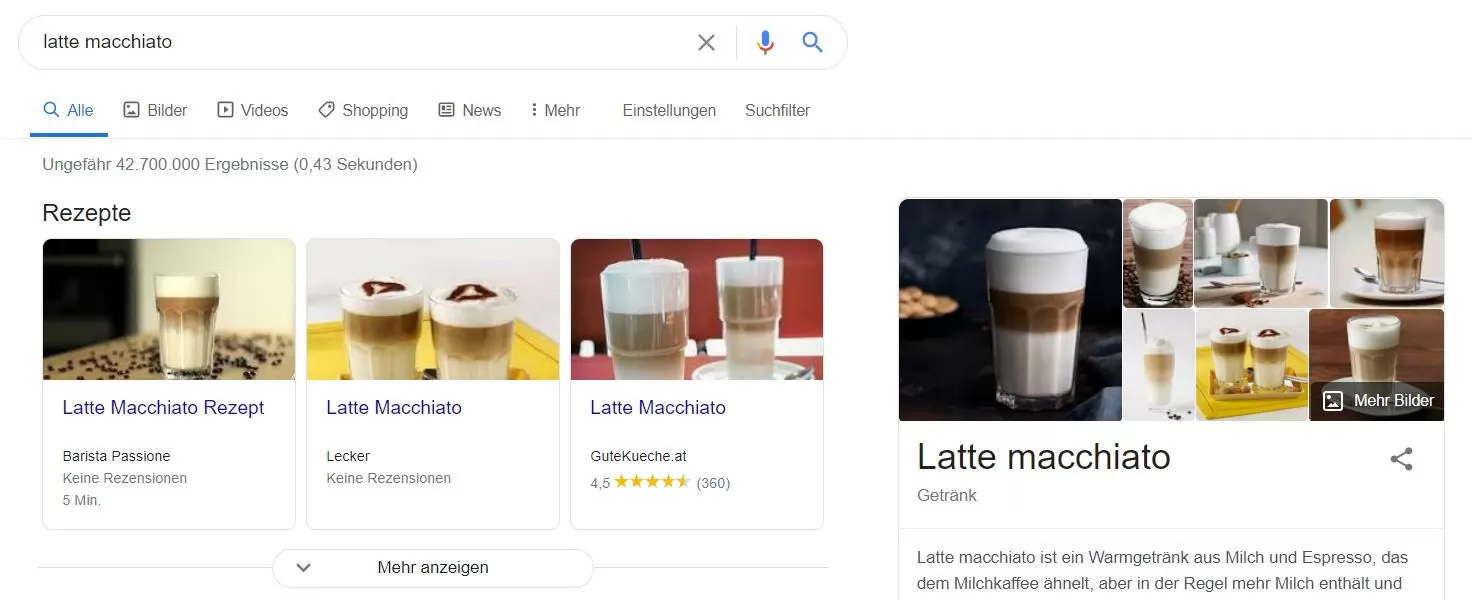
Milchkaffee:
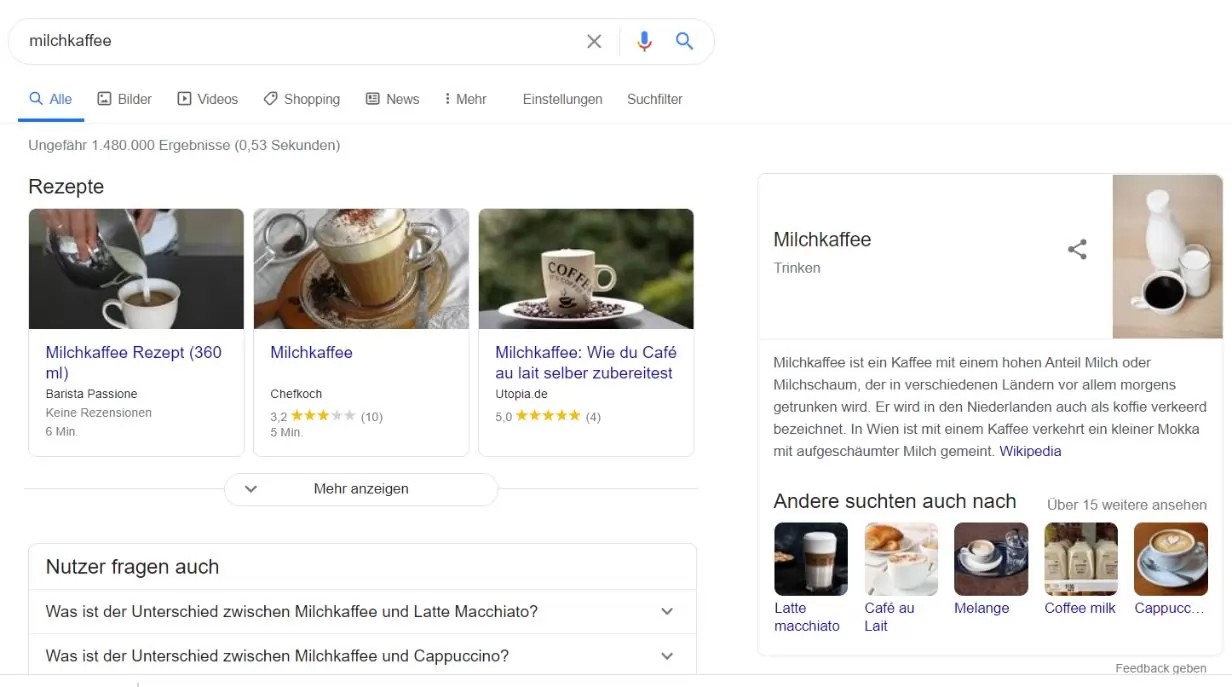
Café au lait:
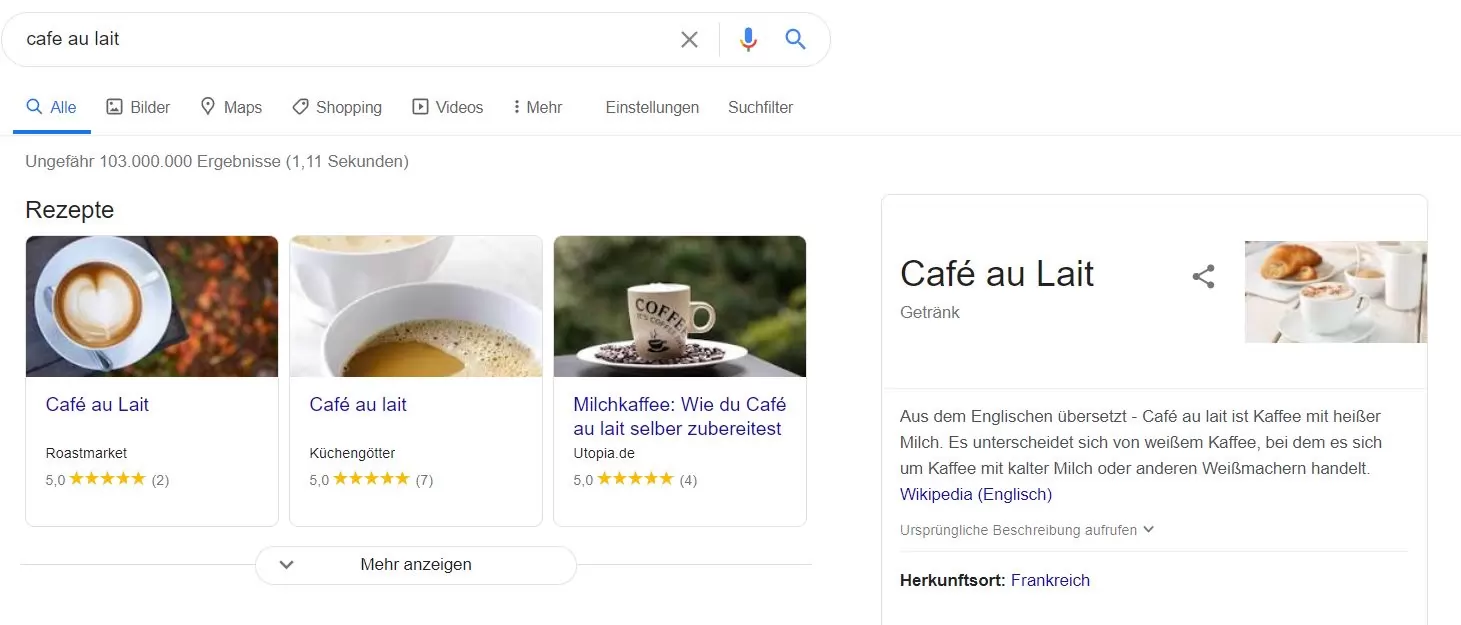
Already at this point, we can say that Latte Macchiato is a different type of drink than a Milchkaffee whereas Milchkaffee and Café au lait seem to be the same thing. One of them is simply a French word that makes it sounds a bit posher.
Café Latte:
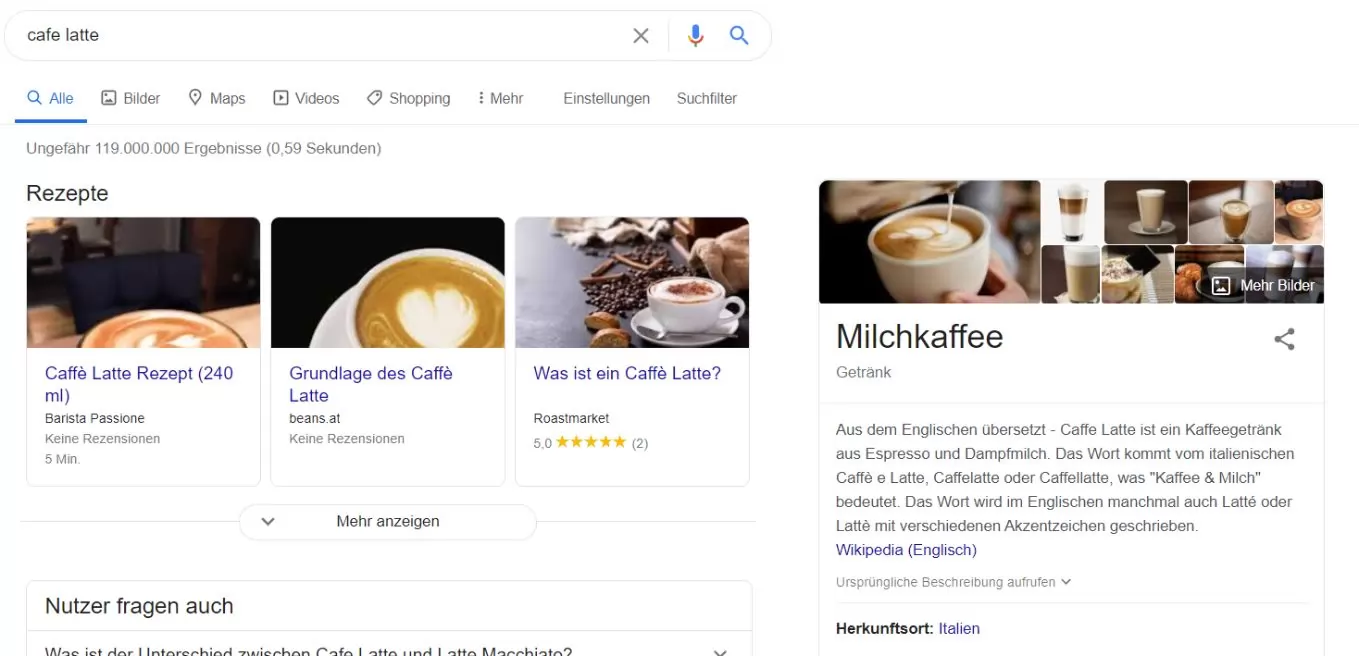
This is where it gets interesting. The images suggest this to be a slightly different presentation of coffee, but the knowledge graph suggests a “Milchkaffee”. Whereas the Café au lait though was described as being French, the Café Latte lists Italy as the country of origin. The description also mentions Espresso with steamed milk which would place it closer to a Cappuccino whereas the Milchkaffee is described as filter coffee with milk. Can this get any more complicated?
Kaffee mit Milch:
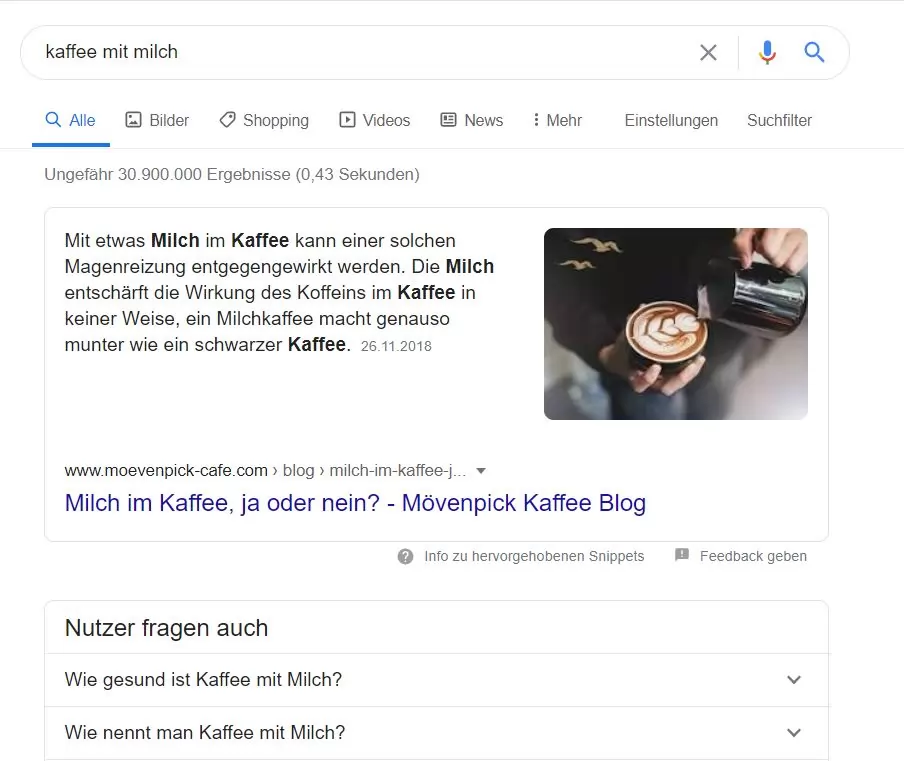
The literal translation would be “coffee with milk”. Traditionally, this would be a filter coffee or Americano with a tiny sip of milk and is the way most Germans drink their coffee. The SERPs though do not mention this. The intent behind that search query insinuates a health concern about coffee and explains the positive effect that milk in your coffee can have on your stomach.
By translating one simple coffee drink, we have tapped deep into the German coffee landscape and have already identified at least three different search intents and target audiences.
Keywords aren’t the only thing that can quickly turn into a minefield when it comes to translations and new markets: Title tags and meta descriptions. The first thing that comes to mind are the character limits, but those are not even an issue if you do it right. Let’s get straight to the point: Title tags and meta descriptions require transcreation, not translation. They are like your advertising line that needs to resonate with your audience and create an emotional reaction. In some cases, and for certain language pairs, a translation can work, but in most cases, you will end up with a boring sentence that won’t engage a native speaker. Good examples for this are movie and book titles that are often transcreated across markets. Let’s take a look at some of the most popular movies of all time and their literal translations:
| Original English title | German title | Literal translation of German title | French title | Literal translation of French title |
| The parent trap | Ein Zwilling kommt selten allein | A twin rarely comes alone | À nous quatre | The four of us |
| Miracle on 34th Street | Das Wunder von Manhattan | Miracle of Manhattan | Le Miracle sur la 34e rue | Miracle on 34th Street |
| Saving Private Ryan | Der Soldat James Ryan | The soldier James Ryan | Il faut sauver le soldat Ryan | We must save the soldier Ryan |
| The Holiday | Liebe braucht keine Ferien | Love doesn’t need a vacation | The Holiday | The Holiday |
| Frozen | Die Eiskönigin – Völlig unverfroren | The Ice Queen – Completely Insolent | La Reine des neiges | The Snow Queen |
| The Notebook | Wie ein einziger Tag | Like a single day | N’oublie jamais | Never forget |
Before you go off and translate your content that you have on your English website, there is one more question to ask yourself: Is that topic relevant to the new market? Local customs and culture should be taken into account.
Shyam Dattani of Searchmetrics held a talk recently at the BrightonSEO Advanced Search Summit about the use of data. Within his data set was a perfect example as to how different markets show different interest for similar products. The product in question is fireplaces and he analysed the data for the US, the UK and Germany.
All three countries see an increase in search volume towards the end of the year when it starts getting colder outside. The increase though is highest in the US related to the Thanksgiving celebrations.
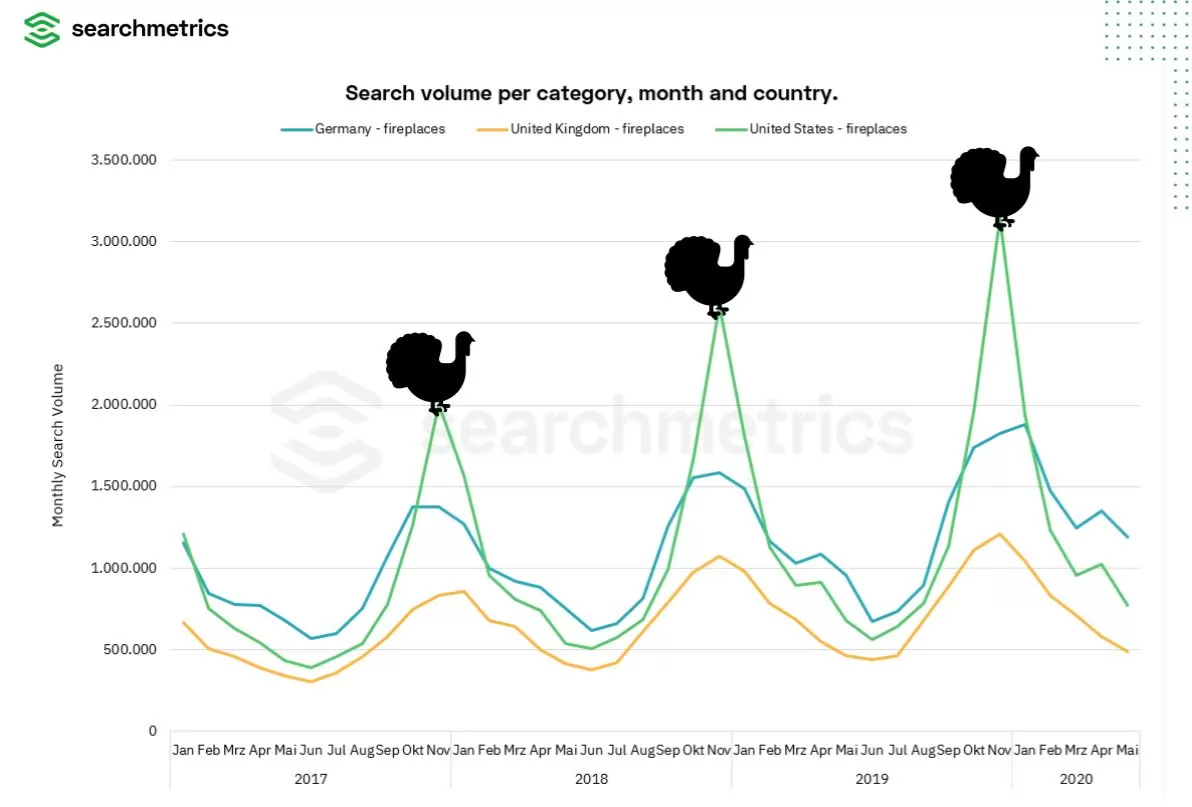
Slide from the presentation by Shyam Dattani on 31st July 2020.
When looking at the overall developments in search volume over a few years, Shyam discovered surprisingly that the levels are equally high in Germany and the US, although the US is a much bigger market in terms of population than Germany.
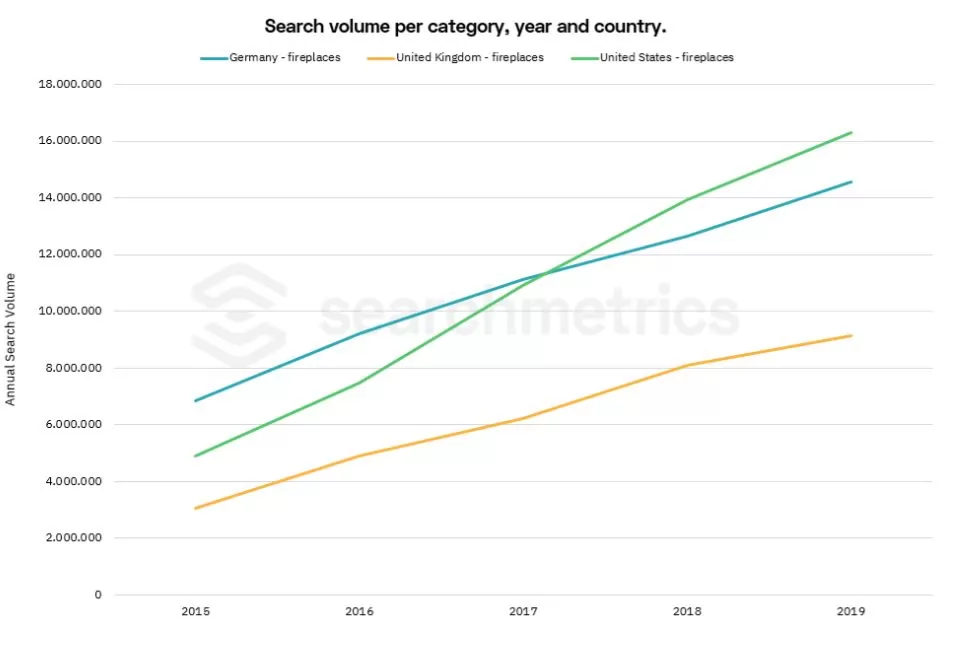
Slide from the presentation by Shyam Dattani on 31st July 2020.
By looking at this data, the UK would not be the main market to target, the opportunity is much bigger in the other two markets. Shyam went a step further to look at the different products and it is again a surprising result:
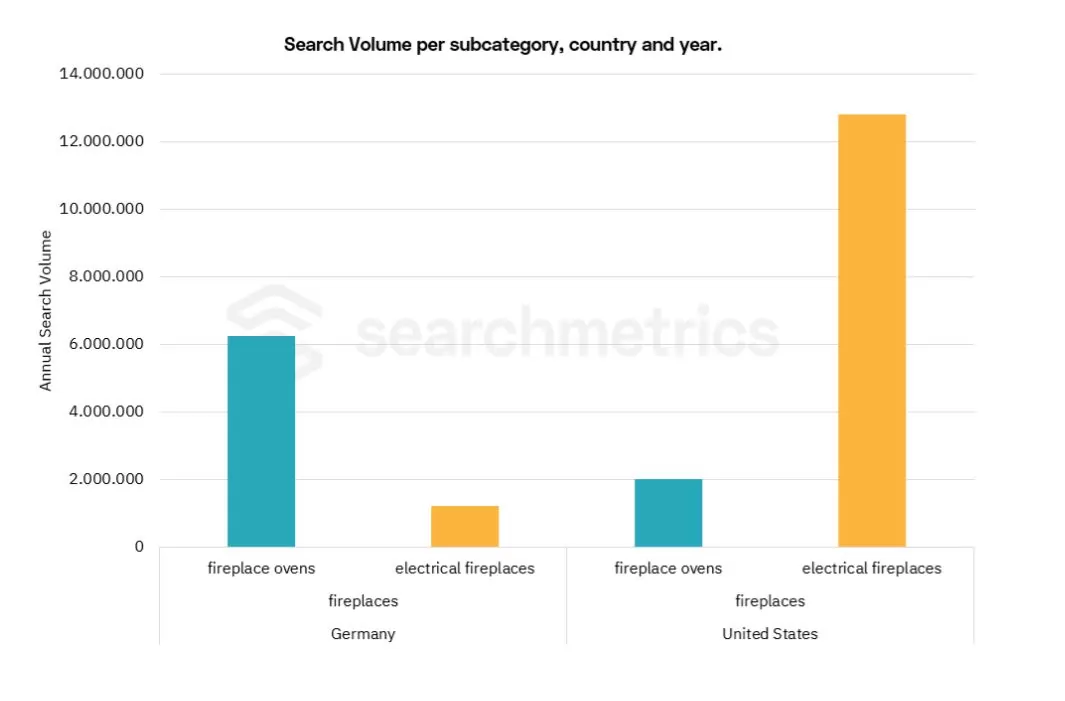
Slide from the presentation by Shyam Dattani on 31st July 2020.
This data makes it obvious which of your content you would localize for the US and which content you would translate into German first.
We already mentioned the US celebration of Thanksgiving as an important clue to find out which products are of interest in each country at a given time. Cultural awareness can help with business decisions, additional products and inform your marketing and content ideas. At this time of the year, there is one product booming for example in Germany that cannot be translated into English: the “Schultüte”, also known as “Zuckertüte”.

Screenshot taken from the online dictionary de.pons.com on 17/08/2020
The first day of school is an important celebration in Germany as a rite of passage. There is a formal ceremony before the whole family gathers for a big garden party. Gifts are usually presented in this colourful cardboard cone knows as “Schultüte”.
To sum this up with some practical tips, we can bring it down to four main points that matter when taking a website global:
Next week, we will talk more about digital PR for international markets and what to be aware of.